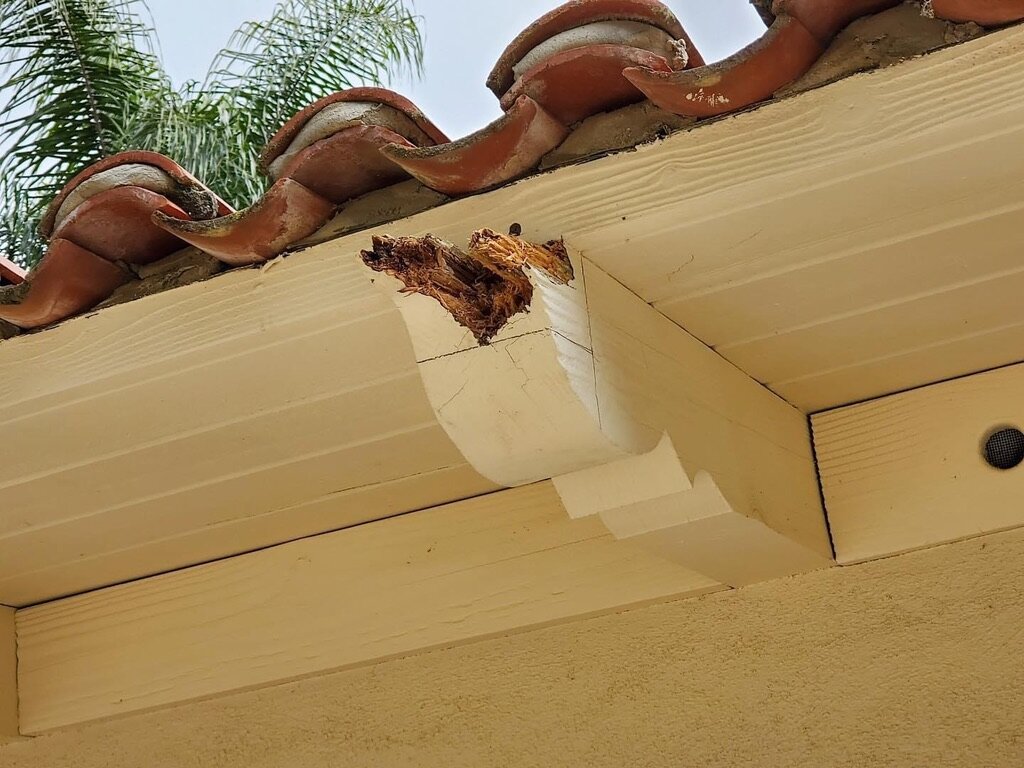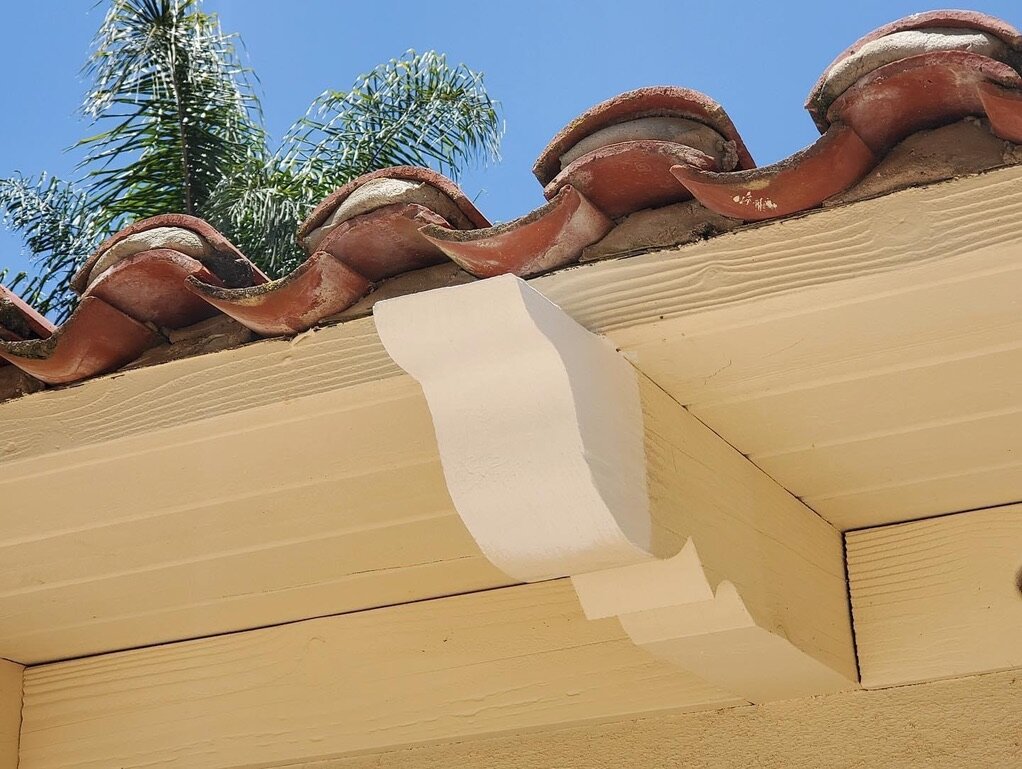Wet and Dry Rot
Megan Pinneo
The differences between wet and dry rot..
And what it does to your home.
Dry rot is considered to be the most serious form of fungus decay to a structure, spreading into and destroying timber. Wet rot happens more frequently, but is not as serious as dry rot. The reason being is, wet rot is contained to where the timber stays wet most often. Both wet and dry rot fungus differ from each other yet, are alike in that they can cause substantial damage to a structure. It is important to identify the type of fungus that is effecting the structure, as wet and dry rot require different treatment.
Here you can see the damage done by dry rot on a million dollar home and the corbels that surround the entire structure. This can be devastating to a home, especially if you are planning to put it on the market. Repairing damage done by wood rot in a timely manner can save you thousands on repairs. Not to mention save you time when dealing with real estate transactions.
Effects of DRY ROT to a structure
Dry rot is known to be the most destructive of the two, consuming the parts of timber that give the wood its strength, weakening from the core. The dry rot fungus can spread without any moisture, because it is able to create its own moisture from the digestion of the timber. Ideal conditions for the fungus is damp timber, with about 20% moisture and accessible air. Dry rot being present in a home can make it difficult to sell, and should be treated in any living situation, whether you plan to stay or sell.
Dry Rot Causes
Dampness in combination with poor ventilation = Dry Rot Fungus
Poor ventilation
Leaking gutters and down pipes
Rising damp
Identifying Dry Rot
Dry, brittle timber
Shrinking in timber
Darker timber
Splitting and cracking
Mushroom-like fruiting body
Grey-whitish skin with yellow
Thin, fluffy white mycelium spreading over wood
Effects of WET ROT to a structure
Wet rot fungus effects extremely damp timber. It doesn’t stop there, it will also decay plaster found in carpet and wallpaper. Wet rot is less destructive as dry rot, since wet rot can only present in damp areas, but should still be treated. Wet rot occurs when excess moisture is in timber for long period of time.
Wet Rot Causes
Moisture in timber over long periods = Wet Rot Fungus
Leaky plumbing
Condensation
Roof defects
Leaky and or blocked gutters
Identifying Wet Rot
It is not usually easy to identify if you have dry or wet rot fungus growth. The two types of fungus are similar in appearance in many ways.
Calling a professional is usually recommended.
Musty damp odor
Shrinkage
Fungus growth in one area
Soft timber or sponge like
Dark timber
Cracked appearance
Conclusion
Damage done by wet and dry rot can range from a localized area to being more widespread. Calling a licensed professional for an inspection is highly recommended to asses the damage, and to identify the type of fungus growth you're dealing with. If you are in the market to sell your home it is a smart idea to have your property inspected for any wood damage prior to listing. Identifying and damage done by fungus growth, and having the work completed, and cleared would aid in speeding up a real estate transaction. Save yourself time and money by calling Black Knight Pest Control. Black Knight can have a professional inspect the property for any wood damage. Not stopping there, Black Knight Pest Control can also complete all the repairs that need to be done!
Black Knight Pest Control is an essential business proud to provide expert pest control service to Temecula Valley and the surrounding areas. Cities include but are limited to; Murrieta, Menifee, Hemet, Riverside, Lake Elsinore, Vista, San Marcos, Fallbrook, Escondido.

